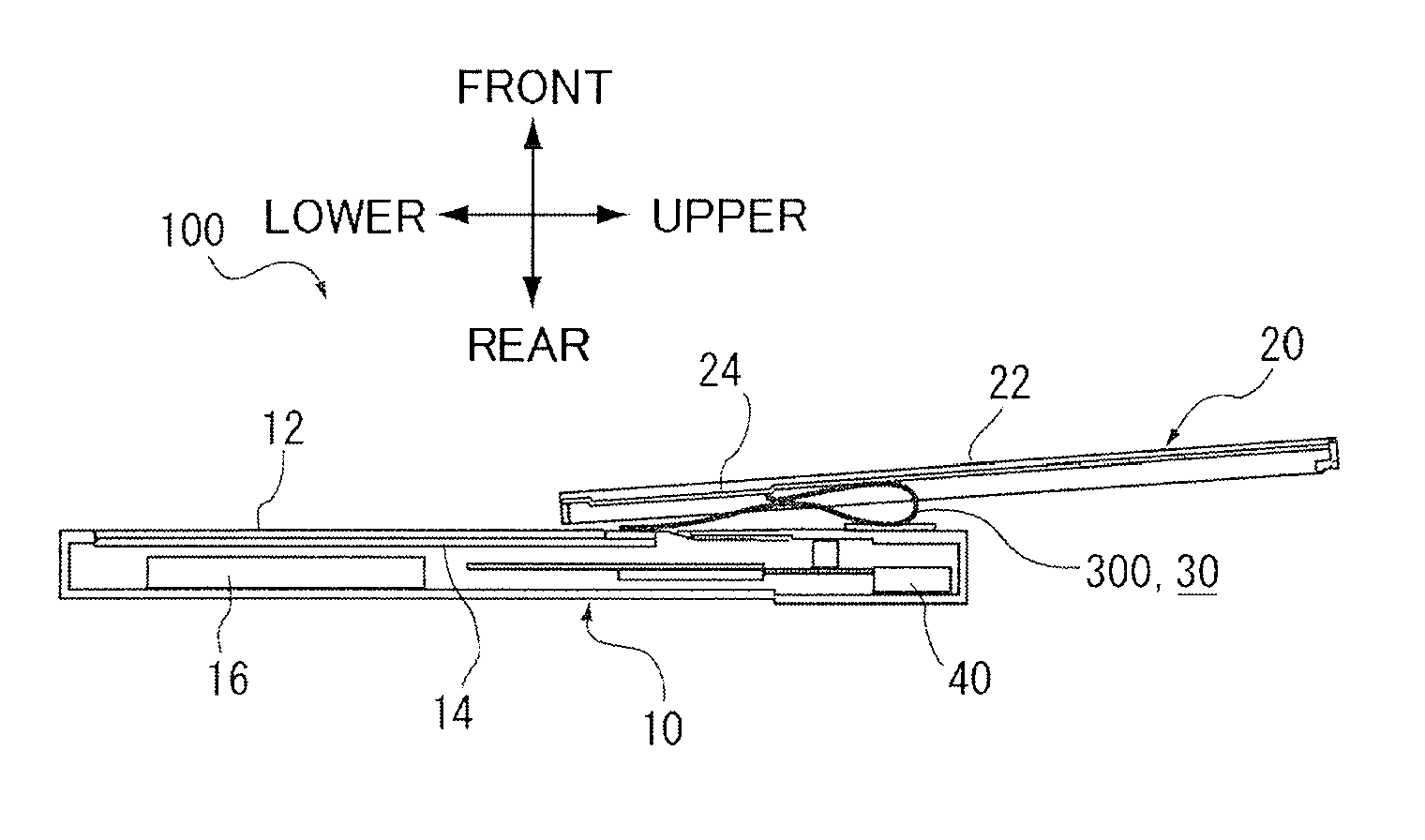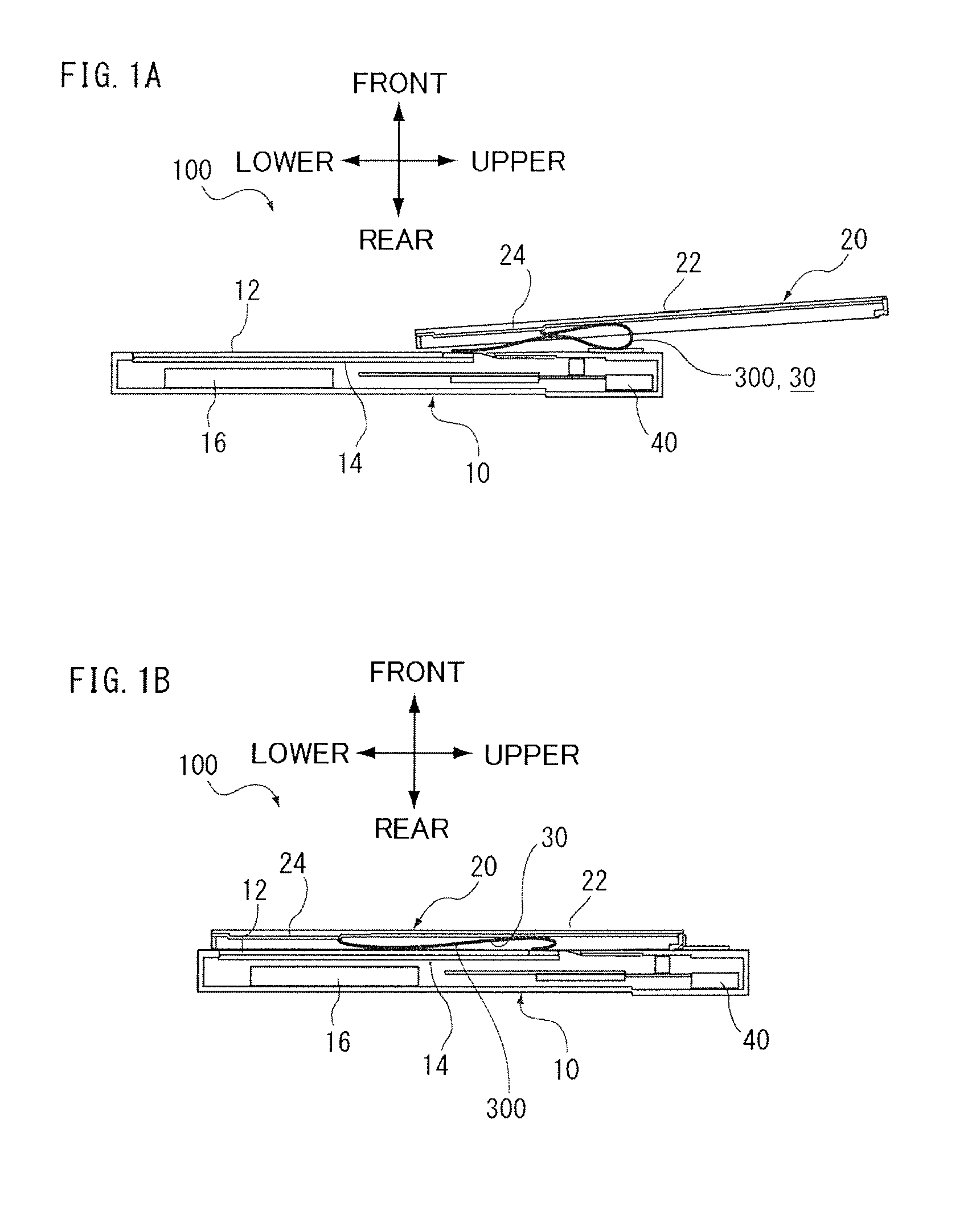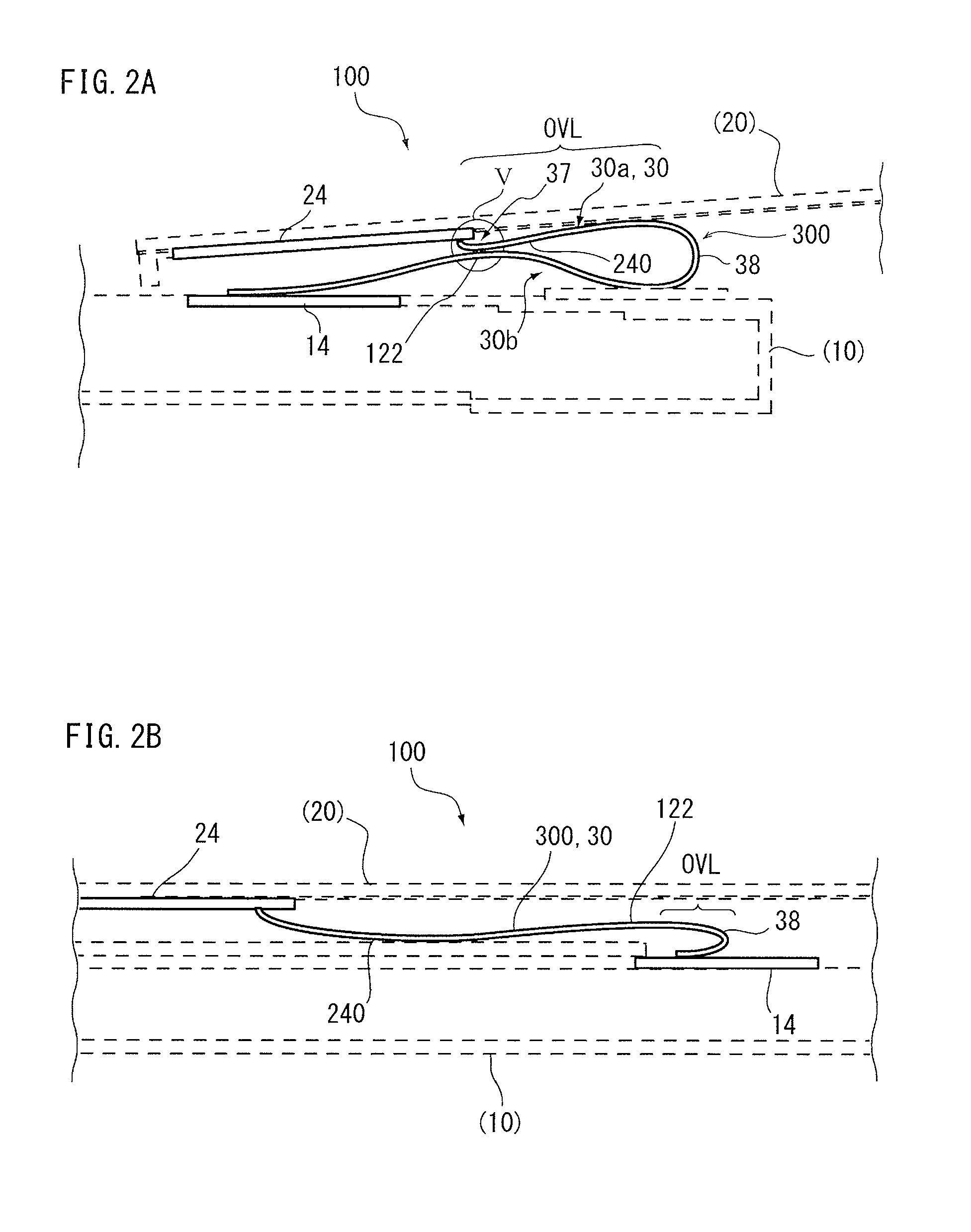Radio communication apparatus and current reducing method
a technology of radio communication and current reduction, which is applied in the direction of substation equipment, antenna details, antennas, etc., can solve the problems of opening or closing the casing, and it is difficult to maintain the desired facing gap between the conductor piece and the folded fp
- Summary
- Abstract
- Description
- Claims
- Application Information
AI Technical Summary
Benefits of technology
Problems solved by technology
Method used
Image
Examples
first embodiment
[0051]FIGS. 1A and 1B are longitudinal sectional views schematically illustrating a radio communication apparatus 100 of the embodiments of the present invention. FIG. 2A is a partial schematic view illustrating a first circuit substrate 14, a second circuit substrate 24, and an interconnect substrate 30 in an opened state of FIG. 1A. Likewise, FIG. 2B is a partial schematic view illustrating the first circuit substrate 14, the second circuit state 24, and the interconnect substrate 30 in a closed state of FIG. 1B. In FIGS. 2A and 2B, the first casing 10 and the second casing 20 are indicated by dashed lines and a part of their constituent elements are not illustrated for description.
[0052]First, the overview of the radio communication apparatus 100 will be described.
[0053]The radio communication apparatus 100 of this embodiment includes the first casing 10, the second casing 20, a connection section 300 that connects the first casing 10 to the second casing 20 to be movable, and an...
second embodiment
[0137]FIG. 10 is a partial schematic view illustrating a first circuit substrate 14, a second circuit substrate 24, and an interconnect substrate 30 in a radio communication apparatus 100 of a second embodiment. FIG. 10A shows an open state in which the second casing 20 is slid upward with respect to the first casing 10. FIG. 10B shows a closed state in which the second casing 20 is slid downward with respect to the first casing 10. The radio communication apparatus 100 of this embodiment is different from the radio communication apparatus shown in FIGS. 1 and 2 according to the first embodiment in that an overlapping region OVL of the interconnect substrate 30 in the opened state is greater than the overlapping region OVL of the interconnect substrate 30 in the closed state.
[0138]That is, in the radio communication apparatus 100 according to the present invention, the second state in which the interconnect substrate 30 is extended may be the opened state as in this embodiment (see ...
third embodiment
[0141]FIG. 11 is a sectional view illustrating the lamination of an interconnect substrate 30 of a third embodiment of the present invention. The interconnect substrate 30 of this embodiment is different from that according to the first embodiment (see FIG. 4) in that an adhesion layer 35c is interposed between a coat layer 35a and a conductor layer 34a.
[0142]One surface of the adhesion layer 35c (lower surface) is joined to the coat layer 35a. The front end of a connection portion 362 vertically drooping from the facing portion 361 is located at the same height as the other surface of the adhesion layer 35c (upper surface). In other words, the front end of the connection portion 362 is flush with the adhesion layer 35c. Further, the connection portion 362 is electrically connected to the conductor layer 34a by joining the adhesion layer 35c to the conductor layer 34a. Since the adhesion layer 35c slightly contracts over time in the surface-normal direction, the connection portion ...
PUM
 Login to View More
Login to View More Abstract
Description
Claims
Application Information
 Login to View More
Login to View More - R&D
- Intellectual Property
- Life Sciences
- Materials
- Tech Scout
- Unparalleled Data Quality
- Higher Quality Content
- 60% Fewer Hallucinations
Browse by: Latest US Patents, China's latest patents, Technical Efficacy Thesaurus, Application Domain, Technology Topic, Popular Technical Reports.
© 2025 PatSnap. All rights reserved.Legal|Privacy policy|Modern Slavery Act Transparency Statement|Sitemap|About US| Contact US: help@patsnap.com



